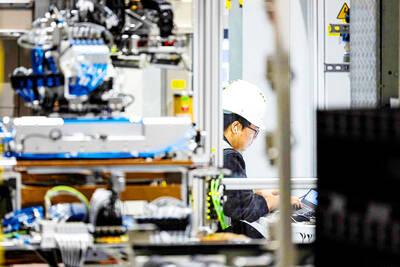Stocks in Europe climbed to a two-month high this week, as European Central Bank (ECB) president Mario Draghi reiterated his commitment to raising inflation as fast as possible and China cut interest rates.
The STOXX Europe 600 Index added 2.1 percent to 345.24 at the close of trading on Friday, snapping a two-day losing streak. The equity benchmark has advanced 2.9 percent this week amid investor speculation of further ECB stimulus. Stocks extended gains on Friday after China slashed interest rates, with miners leading.
“There are two key drivers, with the first being Draghi saying inflation needs to be boosted as soon as possible, which makes quantitative easing more likely,” Steen Jakobsen, chief investment officer at Saxo Bank A/S in Copenhagen, said by telephone. “The decision of the Chinese central bank to cut interest rates shows that China is also reacting to the slowdown. This makes the market perceive a perfect risk-on day for Friday.”
Speaking at the European Banking Congress, Draghi said the ECB must drive inflation higher quickly and will widen its asset-purchase program if necessary.
Any new action would follow measures including interest rate cuts, long-term bank loans and covered bond purchases, with the buying of asset-backed securities said to have started on Friday. Draghi has also declined to rule out buying government bonds.
He said this month that ECB staff have been told to study ways to boost an economy that grew just 0.2 percent last quarter and where inflation of 0.4 percent is persistently below the bank’s goal.
China cut benchmark interest rates for the first time since July 2012 as leaders seek to support growth in the world’s second-largest economy. The reduction follows liquidity injections and targeted cuts to reserve requirements.
National benchmark indices climbed in 17 of the 18 Western European markets on Friday. Spain’s IBEX rose 3.1 percent to post its biggest advance since July last year, while Italy’s FTSE MIB added 3.9 percent for its largest gain in more than two years. Portugal’s PSI 20 Index rose 2.5 percent and Germany’s DAX increased 2.6 percent.
A gauge of commodity producers posted the biggest gain of the 19 industry groups on the STOXX 600 after China cut interest rates.

CHIP RACE: Three years of overbroad export controls drove foreign competitors to pursue their own AI chips, and ‘cost US taxpayers billions of dollars,’ Nvidia said China has figured out the US strategy for allowing it to buy Nvidia Corp’s H200s and is rejecting the artificial intelligence (AI) chip in favor of domestically developed semiconductors, White House AI adviser David Sacks said, citing news reports. US President Donald Trump on Monday said that he would allow shipments of Nvidia’s H200 chips to China, part of an administration effort backed by Sacks to challenge Chinese tech champions such as Huawei Technologies Co (華為) by bringing US competition to their home market. On Friday, Sacks signaled that he was uncertain about whether that approach would work. “They’re rejecting our chips,” Sacks

NATIONAL SECURITY: Intel’s testing of ACM tools despite US government control ‘highlights egregious gaps in US technology protection policies,’ a former official said Chipmaker Intel Corp has tested chipmaking tools this year from a toolmaker with deep roots in China and two overseas units that were targeted by US sanctions, according to two sources with direct knowledge of the matter. Intel, which fended off calls for its CEO’s resignation from US President Donald Trump in August over his alleged ties to China, got the tools from ACM Research Inc, a Fremont, California-based producer of chipmaking equipment. Two of ACM’s units, based in Shanghai and South Korea, were among a number of firms barred last year from receiving US technology over claims they have

It is challenging to build infrastructure in much of Europe. Constrained budgets and polarized politics tend to undermine long-term projects, forcing officials to react to emergencies rather than plan for the future. Not in Austria. Today, the country is to officially open its Koralmbahn tunnel, the 5.9 billion euro (US$6.9 billion) centerpiece of a groundbreaking new railway that will eventually run from Poland’s Baltic coast to the Adriatic Sea, transforming travel within Austria and positioning the Alpine nation at the forefront of logistics in Europe. “It is Austria’s biggest socio-economic experiment in over a century,” said Eric Kirschner, an economist at Graz-based Joanneum

France is developing domestic production of electric vehicle (EV) batteries with an eye on industrial independence, but Asian experts are proving key in launching operations. In the Verkor factory outside the northern city of Dunkirk, which was inaugurated on Thursday, foreign specialists, notably from South Korea and Malaysia, are training the local staff. Verkor is the third battery gigafactory to open in northern France in a region that has become known as “Battery Valley.” At the Automotive Energy Supply Corp (AESC) factory near the city of Douai, where production has been under way for several months, Chinese engineers and technicians supervise French recruits. “They